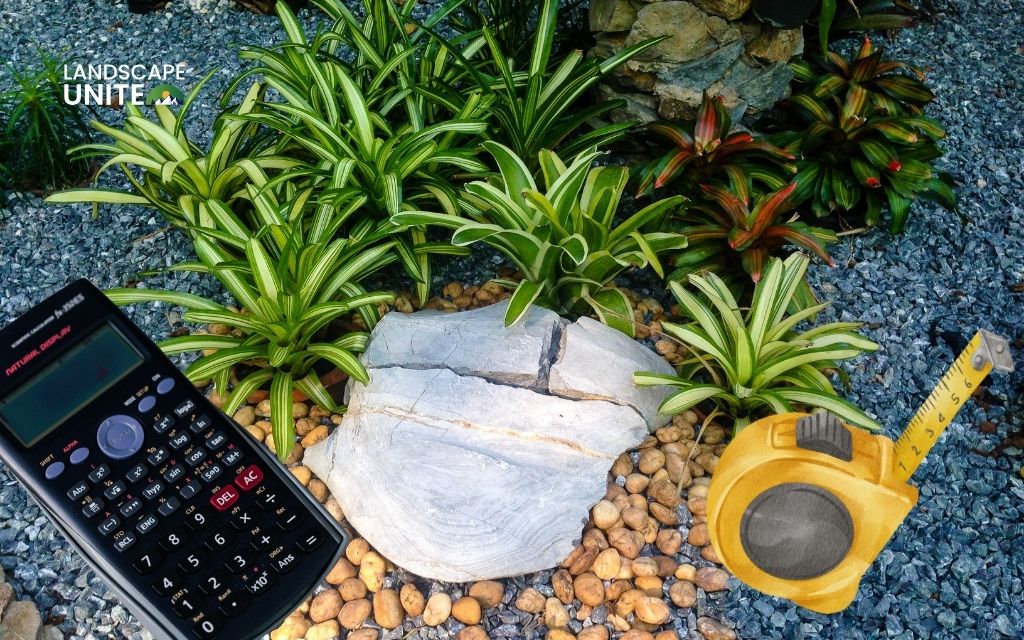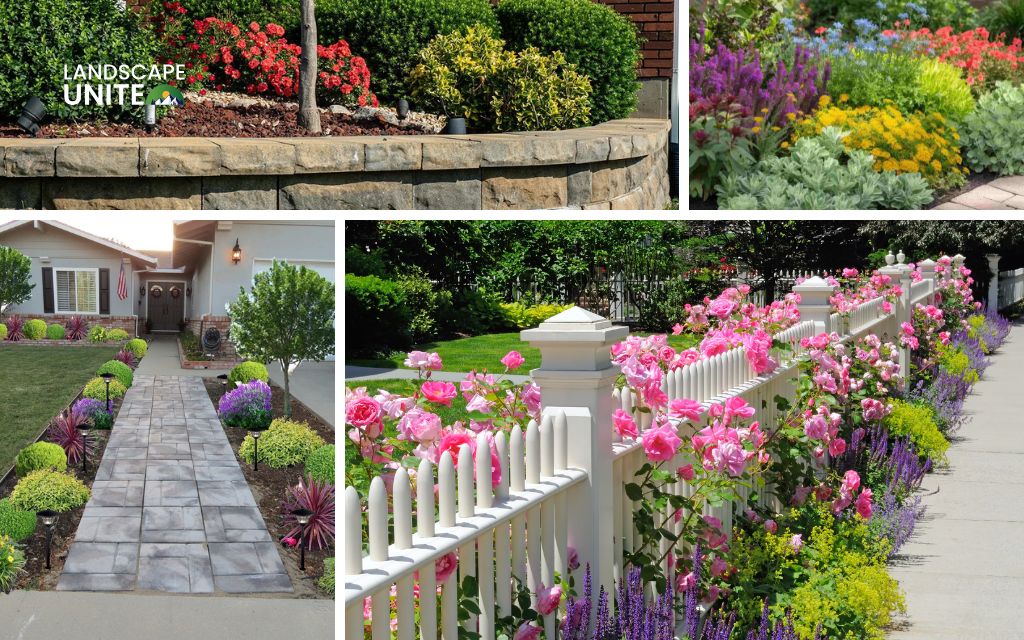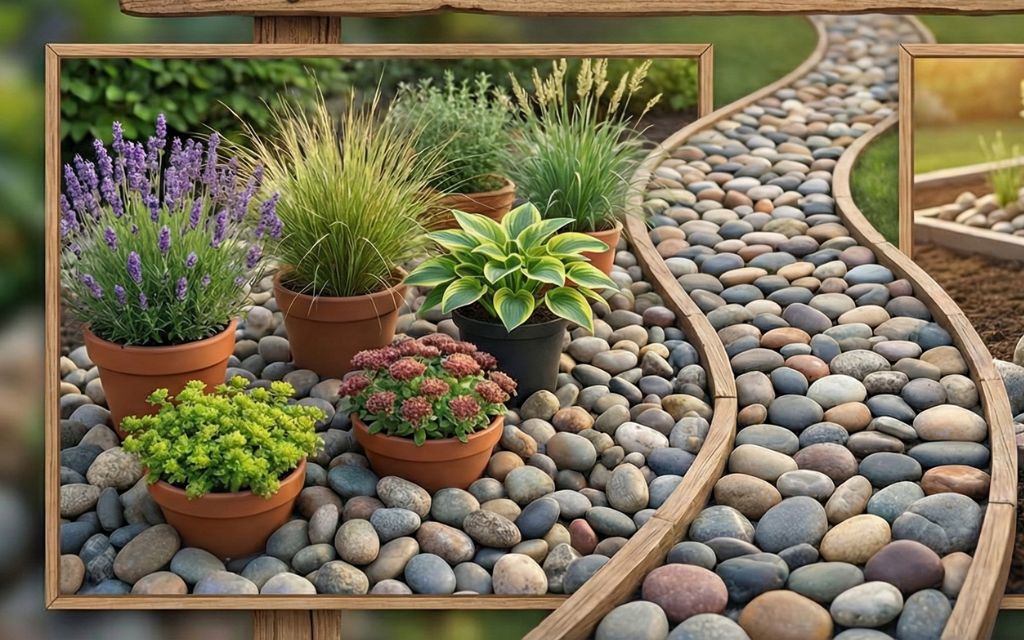The art of combining containers with traditional in-ground plantings has revolutionized modern garden design, offering homeowners unprecedented flexibility and visual impact.
This growing trend of incorporating potted plants in flower beds allows gardeners to create dynamic, layered landscapes that can evolve throughout the seasons.
Whether you’re a seasoned gardener looking to refresh your existing beds or a newcomer seeking creative solutions for challenging spaces, strategic container placement opens up a world of design possibilities for anyone wanting to maximize their outdoor living space.
![How to maximize your garden with potted plants in flower beds [+12 ideas] 1 Why use potted plants in flower beds?](https://landscapeunite.com/wp-content/uploads/2025/09/why-use-potted-plants-in-flower-beds.jpg)
Why use potted plants in flower beds?
Aesthetic appeal & layered dimension
Integrating containers into your flower beds instantly transforms flat, one-dimensional spaces into captivating multi-level displays. Potted plants add crucial height variation, creating natural focal points that draw the eye upward and throughout the garden.
This vertical layering technique allows you to showcase trailing plants that spill gracefully over container edges, while tall specimen plants in larger pots serve as stunning architectural elements.
The varied textures and forms achievable through container gardening provide visual interest that persists even when seasonal blooms fade.
Design flexibility & easy updates
Perhaps the greatest advantage of incorporating potted plants in flower beds lies in the unmatched flexibility they provide.
Unlike permanent plantings that require digging and soil amendment, containers can be easily repositioned, swapped out, or updated as your design vision evolves.
This adaptability proves invaluable for renters who want to create beautiful gardens without making permanent landscape changes, and it’s perfect for experimental gardeners who love trying new plant combinations.
Ideal for full sun areas or harsh soil conditions
In full sun locations, pots allow you to provide optimal growing medium, controlled moisture levels, and even partial shade through strategic placement.
This control becomes particularly valuable in areas with poor drainage, compacted soil, or extreme pH levels where direct planting proves difficult.
Containers also enable you to grow plants that wouldn’t naturally thrive in your regional soil conditions, expanding your plant palette significantly.
Best potted plants for full sun flower beds
When selecting full sun plants for flower beds, focus on heat-loving varieties that can withstand intense sunlight and occasional drought conditions.
These resilient plants not only survive but thrive in containers placed within sunny flower beds.
Top annuals
- Petunias lead the pack with their prolific blooming habit and wide color range, perfect for creating consistent color throughout summer.
- Calibrachoa, often called “million bells,” provides delicate, petunia-like flowers in abundance, creating excellent filler material in mixed containers.
- Lantana offers both upright and trailing forms with clusters of tiny flowers that attract butterflies while providing non-stop color in the hottest conditions.
- Marigolds bring bold oranges and yellows to full sun flower beds, while their pest-deterrent properties benefit neighboring plants.
- Zinnias provide excellent cut flower options with their sturdy stems and vibrant blooms that actually improve with heat, making them ideal candidates for prominent container placement within flower beds.
![How to maximize your garden with potted plants in flower beds [+12 ideas] 2 Best potted plants for full sun flower beds: Top annuals](https://landscapeunite.com/wp-content/uploads/2025/09/top-annuals.jpg)
Durable perennials
- Lavender serves as both fragrant foliage plant and pollinator magnet, creating structured beauty that complements softer flowering plants.
- Salvia varieties offer spiky flower forms in colors ranging from deep purple to bright red, creating vertical interest and season-long blooms.
- Coneflower (Echinacea) provides sturdy, daisy-like blooms that attract beneficial insects while offering excellent drought tolerance.
- Coreopsis delivers cheerful yellow flowers throughout summer with minimal care requirements.
- Sedum varieties offer succulent foliage interest and late-season blooms, providing four-season structure in container combinations.
![How to maximize your garden with potted plants in flower beds [+12 ideas] 3 Best potted plants for full sun flower beds: Durable perennials](https://landscapeunite.com/wp-content/uploads/2025/09/durable-perennials.jpg)
Heat-tolerant & foliage plants
- Coleus brings incredible foliage color and pattern options, thriving in containers where its dramatic leaves create stunning backdrops for flowering plants.
- Sweet potato vine provides vigorous trailing growth in chartreuse, purple, or bronze tones, perfect for softening container edges.
- Yucca offers architectural form with sword-like leaves that create bold focal points.
- Cordyline provides tropical flair with colorful, spiky foliage that adds height and drama to container arrangements.
- Canna lilies deliver both exotic flowers and large, tropical-looking leaves, creating impressive specimen plants for prominent flower bed positions.
![How to maximize your garden with potted plants in flower beds [+12 ideas] 4 Best potted plants for full sun flower beds: Heat-tolerant & foliage plants](https://landscapeunite.com/wp-content/uploads/2025/09/heat-tolerant-foliage-plants.jpg)
12 Creative ideas using potted plants in flower beds
Thriller – filler – spiller classic
Center a dramatic canna lily as your thriller plant, surround it with cascading calibrachoa for consistent color, and let sweet potato vine spill gracefully over container edges. This timeless combination creates instant impact when placed as centerpiece elements within established flower beds, providing height, fullness, and flowing movement.
Shades of purple
Combine fragrant lavender with trailing verbena and add texture with purple fountain grass for a sophisticated monochromatic scheme. This calming yet striking selection thrives in hot, dry conditions while providing both visual appeal and beneficial insect habitat.
Heat-loving summer bloomers
Mix multi-colored lantana with spiky salvia and textural sedum for a vibrant, drought-tolerant trio. This combination delivers non-stop color with minimal maintenance requirements, perfect for busy homeowners wanting maximum impact with minimal effort.
Tropical drama
Create exotic appeal by pairing colorful cordyline with patterned coleus and bold elephant ear plants. This combination works beautifully for creating bold statement areas within lush flower beds or along prominent walkways where tropical flair enhances landscape architecture.
Pastel cottage garden
Achieve romantic cottage garden appeal by combining silvery dusty miller with soft pink petunias and cascading white bacopa. These soft, romantic colors create classic cottage garden charm that works particularly well near home entryways or seating areas.
Pollinator magnet
Support beneficial insects while creating beautiful displays using coneflower, bee balm, and alyssum. This combination attracts bees and butterflies while providing layered textures and sweet fragrances that enhance the garden experience.
![How to maximize your garden with potted plants in flower beds [+12 ideas] 5 12 Creative ideas using potted plants in flower beds](https://landscapeunite.com/wp-content/uploads/2025/09/12-creative-ideas-using-potted-plants-in-flower-beds.jpg)
Bold & bright contrast
Create eye-catching color combinations using red geraniums, yellow marigolds, and blue lobelia for cheerful, high-impact displays. This vibrant choice works excellently in front-facing beds or areas where maximum curb appeal is desired.
Evergreen foundation
Establish year-round structure using dwarf boxwood and trailing ivy with seasonal pansies in white or purple. This combination offers a permanent framework with seasonal color flexibility, ideal for formal garden settings requiring consistent structure.
Fall-favorite mix
Transition into autumn using ornamental kale, chrysanthemums, and creeping jenny for warm seasonal tones. This combination provides perfect cool-weather interest while maintaining container appeal through temperature fluctuations.
Herbs & edibles
Combine functional beauty using basil as centerpiece, nasturtium for edible flowers, and thyme for edge spilling. This works excellently for edible landscaping or kitchen gardens where form and function merge seamlessly.
Low-maintenance combo
Achieve beauty without extensive maintenance using drought-tolerant lavender, creeping rosemary, and sedum. This tough trio thrives with minimal care while providing continuous interest for water-wise gardening approaches.
Monochrome white elegance
Create sophisticated appeal using white geranium, silvery dusty miller, and sweet alyssum for clean, cohesive displays. This cool selection provides elegant contrast that stands out beautifully during evening hours or in partially shaded locations.
![How to maximize your garden with potted plants in flower beds [+12 ideas] 6 Monochrome white elegance](https://landscapeunite.com/wp-content/uploads/2025/09/monochrome-white-elegance.jpg)
Design tips for combining potted plants with flower beds
Vary heights & sizes
Use tall containers as dramatic backdrops or accent pieces that anchor your design, while clustering smaller pots near flower bed edges creates gentle transitions between hardscape and planted areas.
This layering technique mimics natural plant communities and creates depth that makes small spaces appear larger.
Choose complementary colors & materials
Coordinate container colors with your flower bed palette – warm terracotta pots enhance hot-colored plantings, while glazed ceramic containers in cool tones complement modern, sophisticated schemes.
Consider your home’s architectural style and existing hardscape materials to ensure containers enhance rather than compete with your overall design.
Create visual flow
Avoid rigid, institutional-looking arrangements by placing containers in gentle curves or staggered lines that guide the eye naturally through your garden space.
Resist the temptation to line up all containers in strict rows, instead creating organic groupings that feel naturally integrated with your existing flower bed plantings.
Repeat elements for cohesion
Maintain visual unity by repeating certain container types or plant varieties throughout your design. This repetition creates rhythm and prevents the cluttered appearance that can result from using too many different elements.
Group containers in odd numbers (3, 5, 7) as these arrangements appear more natural and pleasing to the eye than even-numbered groupings.
Conclusion
Potted plants in flower beds aren’t just decorative additions – they’re powerful design tools that transform ordinary gardens into dynamic displays.
Whether filling challenging spaces, adding seasonal color, or experimenting with new combinations, containers offer flexibility that traditional planting cannot match.
Start small with a few strategic placements, and watch as your flower beds evolve into living art that reflects your creativity and style.
Ready to transform your flower beds? Start with one or two container combinations from our design ideas above, and explore our extensive collection of gardening tips for more inspiration.
Frequently asked questions (FAQs)
Can you bury pots partially in flower beds for a blended look?
Absolutely! Partial burial is an excellent technique for creating seamless integration between containers and surrounding plantings. This method allows for easy seasonal changes while maintaining the natural appearance of planted beds. Ensure containers still have adequate drainage and can be easily removed for maintenance.
Do potted plants compete with in-ground plants for water?
While containers don’t directly compete for soil moisture, proximity does matter for overall garden health. Ensure both container and in-ground plants receive adequate hydration by monitoring soil moisture levels regularly and adjusting watering schedules accordingly.
What pots work best outdoors long-term?
For full sun flower beds and seasonal exposure, choose containers made from durable materials like glazed ceramic, fiberglass, concrete, or high-quality resin. These materials resist fading, cracking, and weather damage while maintaining their decorative appeal through multiple growing seasons.
How do I protect pots from tipping over in the wind?
Select containers with wide bases relative to their height, and consider weighted pots for exposed locations. Partially bury containers or wedge them securely between rocks or other landscape features for additional stability. Group smaller containers together for mutual support during windy conditions.


